Scala ad Caelum
| This article is about the world. You may be looking for the field theme. |
Scala ad Caelum (Lat: "Stairway to Heaven") is a world that appears in Kingdom Hearts Union χ, Kingdom Hearts III, and Kingdom Hearts Dark Road.
Scala ad Caelum is built upon the ruin of Daybreak Town. It is known to be the nexus from which all worlds are born.
Development[edit]
Scala ad Caelum was first unveiled in a teaser trailer at a Kingdom Hearts HD 2.5 Remix fan event in Los Angeles in 2014, with the working name "Cable Town."[1]
For gameplay purposes, it is recognized as part of the Keyblade Graveyard in Kingdom Hearts III; however, in Kingdom Hearts III Re Mind, it is recognized as its own world.
Settings and Areas[edit]
Kingdom Hearts III[edit]
During the Age of Fairy Tales, Scala ad Caelum was the world known as Daybreak Town.
The world is perpetually sunny and clear and considered breathtakingly beautiful, consisting of a nearly infinite number of mountain towns suspended on a body of water–stretching out as far as the horizon, though the "mountains" are composed entirely of glistening white and gold buildings–with a large citadel on the top of each mountain. Nearly every building in Scala ad Caelum has at least one windmill fixed atop it. Travel between the mountains is apparently achieved through numerous inter-connected cable cars. Except for the central mountain explored in Kingdom Hearts III and Kingdom Hearts Dark Road, all of the others were abandoned even when Xehanort was living there many decades ago.
The explorable section of Scala ad Caelum is divided into two areas, the first of which is The Stairway to the Sky (天へ続く階段 Ten e Tsuzuku Kaidan, lit. "Stairway to Heaven"), a pier located directly beneath the central citadel. Scattered throughout the town are various market stands and leisure areas. At the north-most point is a large golden fence that hosts a number of larger manors and stately homes, which are inaccessible.
In Kingdom Hearts III Re Mind, Sora can travel through the western keyhole-shaped gate, arriving at the Breezy Quarter (風の通る街 Kaze no Tōru Machi, lit. "Windy Town"), a massive urban area populated by many homes, apartment buildings, shops, and vendor stands that appear to sell books, scrolls, and various scientific instruments. In the northern center of the Quarter, there is an unusual gold, a mechanical contraption with a mural at the top, a globe in the center, and three levers—each colored red, blue, and green, respectively—to operate it. By striking the levers, players are able to manipulate the rings surrounding the globe to line up the lights; each time it is successfully lined up, the mural changes, appearing to tell the story of how Daybreak Town eventually became Scala ad Caelum. Similarly, the ground surrounding the machine bears the cobblestone and purple star-shaped motif of Daybreak Town. Going west, there is a large though non-functional water fountain. By hitting the four spiral pylons surrounding the fountain, it will begin to spew water once more. Underneath the Breezy Quarter is a large waterway, which can be accessed from a lower level near a large plaza. By reaching the end of the waterway and manipulating the chain gate, players can use Free Running up to inside the tallest windmill in the Quarter.
Submerged beneath the water of the main mountain town are the upside-down ruins of Daybreak Town's clock tower, where the second phase against Armored Xehanort takes place. The first phase of the battle takes place in twisted boxed-in version of The Stairway to the Sky called Armored Master Xehanort Arena, while the third phase takes place in a ruined version of the Stairway to the Sky with stormy skies, with half of the area now flooded and inaccessible, and debris floating and completely still all around the area and the island. The final battle against Xehanort takes place at top of the world's main citadel called Top of castle.
Eraqus and Xehanort's classroom is also seen in multiple cutscenes where they often play chess. The room is decently large with white walls, golden beams, windows, and ceiling arches, as well as two fans at the top. The room also contains to big bookshelves and chalkboard with No Name hanging above it.
Kingdom Hearts Union χ[edit]
In Kingdom Hearts Union χ an earlier version of Scala ad Caelum is shown during the ending. At this point in the time, the world has a much darker palette, and is reminiscent of 19th-century London in design. The skyline is filled with high towers and spires, and the rooftops are decorated with statues of cloaked figures and hawks. In one of the town squares is a large fountain with a statue of Ephemer at the top, as he's the town's founder.
Kingdom Hearts Dark Road[edit]
In Kingdom Hearts Dark Road, Eraqus, Xehanort, as well as their other classmates often hang out at the tip of The Stairway to the Sky. Xehanort and the others are taught and briefed by their master inside the same classroom seen in Kingdom Hearts III. Somewhere on the other side of town is a long stretching graveyard where Xehanort and Eraqus' friends eventually end up. Several plain rooms and balconies are also visited towards the end of the game.
Baldr is also seen being placed inside a mental ward after learning of his sister's disappearance. The ward has white padded walls and contains only a simple bed and table.
Story[edit]
Between Kingdom Hearts Union χ and Kingdom Hearts Dark Road[edit]
Ephemer founded the town of Scala ad Caelum after the destruction of Daybreak Town, and eventually a statue commemorating him is built in a fountain plaza in the town. At some point after this, Brain ends up in Scala ad Caelum were he meets Sigurd, who tells him of Ephemer's role in the town's founding and that his appearance there was ordained and that he would answer Brain's questions at headquarters and proceeds to bring him there.
Later in time, Xehanort is born in this town and given away to a cloaked person, who takes him to Destiny Islands. After growing up on Destiny Islands, Xehanort encounters his future Heartless as a hooded figure, who sends him back to Scala Ad Caelum to train to become a Keyblade Master.
Xehanort meets and befriends Eraqus and the two become close, enjoying playing the game Alba & Ater. One day, while playing Xehanort asks Eraqus about the ancient Keyblade War, which Eraqus claims is their master's favorite story. However, when Xehanort mentions the "Lost Masters" who actually started the war, Eraqus feigns ignorance, and Xehanort remains unconvinced. Xehanort muses on how on the land where the Keyblade War was fought, darkness will prevail and light expire, looking up at No Name, while Eraqus counters him by claiming that the light might surprise Xehanort and prevail, and Xehanort expresses interest in this possibility.
After their last game, Eraqus and Xehanort begin a new game of enacting a battle between seven dark pieces and one white piece.
One day Eraqus meets Baldr outside, who expresses his concern over his sister's upcoming Mark of Mastery Exam. Baldr says Hoder made it sound like she would not return but Eraqus comforts him saying that the exam couldn't be that dangerous.
Kingdom Hearts Dark Road[edit]
Xehanort studies the Keyblade and its lore under Master Odin, along with his classmates Eraqus, Vor, Bragi, Urd, Hermod, and Baldr. As lower classmen, they are aware that other worlds exist, but are forbidden from visiting them. When the upper classmen disappear during their Mark of Mastery Exam, Master Odin orders the remaining students to leave Scala ad Caelum and venture forth to other worlds in search of the missing students.
During their search they encounter the upper classman Vidar who tells them he has a mission to complete and asks them to join him, with only Vor agreeing. Upon returning to Scala ad Caelum, the remaining classmates debate on what to do, with Eraqus and Bragi leaving to find Vor, and Xehanort, Urd, and Hermod, continuing with the investigation. After learning of Vidar's attempt to summon Kingdom Hearts, the classmates all return to Scala ad Caelum to inform Odin. Odin reveals the nature of Kingdom Hearts as a means to purge all worlds and that Vidar is attempting to summon it as a means to vanquish Darkness. Vidar returned to Scala ad Caelum after the deaths of Heimdall, Helgi, Sigrun and Hoder to say goodbye to Master Odin, who revealed to Vidar the story of the Seven Lights and Thirteen Darknesses. Wondering what to do next, the classmates are met by Baldr who reveals that his secret mission was a cover up by Odin, and that he had actually witnessed his sister death and was recovering in the infirmary. He then proceeds to tell them of a way to speak to Hoder by reaching the Underworld and takes them there.
After Odin rescues Xehanort and Eraqus from the Corridors of Darkness, they tell him about meeting Baldr, before Scala Ad Caelum is attacked by Heartless. Odin takes the No Name Keyblade saying he'll evacuate the remaining students and for the pair to stay in the classroom. However Xehanort reveals to Eraqus that Baldr is behind everything, having succumbed to Darkness because of the death of his sister, and the two leave to find him. Outside the pair encounter the remaining upper classmen, who've abandoned their attempt to summon Kingdom Hearts but Eraqus insists on fighting them before Xehanort puts a stop to it. Vidar reveals Vor has gone to find Master Odin before Baldr appears and sets Heartless on the students before going off to find Vor. The Upperclassmen race after Baldr with Xehanort and Eraqus in toe. Meanwhile Vor comes face to face with Baldr and is forced to fight him before being rescued by the upper classmen. However Baldr gets the upper hand and kills them all leaving only Xehanort and Eraqus left. Baldr tells the pair to meet on the roof of the tower, where he explains that he planned the deaths of all the students in order to sacrifice thirteen Lights to Darkness and summon Kingdom Hearts. He had planned to coax Vidar into summoning Kingdom Hearts but Vidar abandoned the attempt so he had to take matters into his own hands. When Eraqus asks why he was willing to summon Kingdom Hearts when the Darkness in him would be destroyed, he says that once the worlds are purged, everything will be reborn from Darkness.
Xehanort and Eraqus battle Baldr and as it reaches its climax, Baldr envelops himself and Xehanort in Darkness where he attempts to reason with Xehanort. However Hoder appears having asked Xehanort to conceal her dying heart in side his in order to try and reach her brother. Odin also appears and traps Baldr with the No Name. Unfortunately Hoder's attempt fails and she fades away, leaving Xehanort to deal the finishing blow.
One month after the battle with Baldr, Xehanort and Eraqus meet in the graveyard to put flowers on everyone's graves. Eraqus mentions that they will be put though their Mark of Mastery Exam soon and that Odin is thinking of retiring. After the pair leave, a hooded Bragi appears who laments that he'll have to disappear for a while since everyone thinks he's dead.
Six years later, Xehanort and Eraqus pass their Mark of Mastery Exam, with Eraqus receiving the Master's Defender and Xehanort receiving the No Name. However soon after the pair have a falling out and leave Scala ad Caelum going their separate ways, not meeting again for nearly fifty years.
Kingdom Hearts III[edit]
After forming the χ-blade at the Keyblade Graveyard and ascending to Kingdom Hearts, Riku says to Sora that because Master Xehanort exists outside of time and space, he can be used as a portal to trap himself in. Volunteering to defeat Xehanort, Sora, alongside Donald Duck and Goofy, decides to enter the portal, which is opened by the rest of the guardians of light using their Keyblades on Xehanort. This transports the four to Scala ad Caelum.
Sora, Donald, and Goofy start at the front of the empty town and walk into it. They notice Xehanort appearing seemly in multiple places at once, walking around. They try to pursue him, only to be confronted by twelve Replica Xehanorts, each carrying a weapon from a member of the real Organization XIII. After defeating them, Master Xehanort reappears, describing Scala ad Caelum to Sora as a former seat of power for all Keyblade wielders, and announcing he will become one with his other-selves. Xehanort and the Remnants all combine together, and Xehanort clads himself in a new Keyblade Armor. Xehanort fights Sora and his allies while bending space to his will, causing them to fight in an enclosed room, the walls folded upland, underwater, and then at the original location, although heavily damaged and flooded by the fighting. However, Sora manages to break the armor, but Xehanort then teleports to the tower in the middle of the island they are on.
Sora, Donald, and Goofy follow him to the top of the tower, where he wields the χ-blade in one final battle. Sora fights Xehanort but is defeated by Xehanort using the power of Kingdom Hearts. He is then revived by Donald and Goofy, who together defeat Xehanort.
In the aftermath of the final battle, Xehanort is insistent on his goals until Eraqus projects his spirit through Terra and beckons him to surrender. Finally admitting defeat, Xehanort congratulates Sora on his victory and hands him the χ-blade before passing away.
Kingdom Hearts III Re Mind[edit]
After traversing the hearts of five guardians in his efforts to restore Kairi's heart, Sora passes through Xehanort's portal as a heart, arriving at Scala ad Caelum ahead of his past self. He manages to recover one fragment of her heart from an unusual Shadow in the Stairway from the Sky, and four more from various locations in the Breezy Quarter, culminating in a battle with a Darkside in the plaza.
After collecting the fifth fragment, he returns to the Stairway to the Sky, where Master Xehanort reveals that Kairi's heart was divided into seven fragments in total. Before Sora can pursue the remaining two, however, his past self arrives, and Sora is forced to relive the battle with the Replica Xehanorts. After defeating them, Sora follows the connection between his heart and Riku's to return to the Keyblade Graveyard.
Kingdom Hearts Melody of Memory[edit]
Yen Sid instructs King Mickey to investigate Scala ad Caelum in order to learn about Quadratum and the ancient Keyblade Masters. Another Key
Characters[edit]
Enemies[edit]
Heartless[edit]
|
|
Nobodies[edit]
|
|
Other[edit]
|
|
Notes and references[edit]
| Kingdom Hearts III |
|---|
| Characters |
| Party members |
| Sora - Donald Duck - Goofy - Riku - Aqua Hercules - Woody - Buzz Lightyear - Rapunzel - Eugene Fitzherbert - James P. Sullivan - Mike Wazowski - Marshmallow - Jack Sparrow - Baymax Mickey Mouse - Kairi - Ventus - Lea - Roxas - Xion |
| Link system |
| Meow Wow - Wreck-It Ralph - Simba - Ariel - Stitch |
| Antagonists |
| Real Organization XIII (Seekers of Darkness) Master Xehanort - Young Xehanort - Terra-Xehanort - Ansem, Seeker of Darkness - Xemnas - Vanitas - Xigbar - Saïx - Luxord - Marluxia - Larxene - Dark Riku - Xion Vexen - Demyx - Replica Xehanort Villains Maleficent - Pete - Hades - Rock Titan - Ice Titan - Lava Titan - Tornado Titan Mother Gothel - Randall Boggs - Hans - Davy Jones - Kraken - Cutler Beckett - Dark Baymax Other Anti-Aqua |
| Non-playable characters |
| Seven Guardians of Light - New Seven Hearts Aced - Aeleus - Air Droids - Angelic Amber - Anna - Ansem the Wise - Apollo - Athena - Beasts & Bugs - Boo - Bouncy Pets - CDA Agent - Chip and Dale - Chirithy - Daisy Duck - Dark Figure - Dilan - Elizabeth Swann - Elsa - Ephemer - Eraqus - Even - Fred - Gigas - Go Go Tomago - Gopher - Green Army Men - Gula - Hamm - Hayner - Hector Barbossa - Hermes - Hiro Hamada - Honey Lemon - Huey, Dewey, and Louie - Ienzo - Invi - Ira - Isa - Jiminy Cricket - Joshamee Gibbs - Kristoff - Lingering Will - Little Green Men - Lumpy - Luxu - The Master of Masters - Maximus - Megara - Merlin - Minnie Mouse - Moogle - Nameless Star - Naminé - Olaf - Olette - Pascal - Patchwork Animals - Pegasus - Pence - Piglet - Philoctetes - Pluto - Rabbit - Remy - Rex - Riku Replica - Roo - Sarge - Scrooge McDuck - Supreme Smasher - Sven - Terra - Tia Dalma - Tigger - Wasabi - William Turner - Winnie the Pooh - Yen Sid - Yozora - Zeus |
| Locations |
| Worlds |
| Olympus - Dark World - Mysterious Tower - Disney Castle - Radiant Garden - Twilight Town - Toy Box - Kingdom of Corona - Monstropolis - Arendelle - The Caribbean - San Fransokyo - 100 Acre Wood - Destiny Islands - Castle Oblivion / Land of Departure - Keyblade Graveyard - The Final World - Scala ad Caelum - Quadratum |
| Terms |
| Alba & Ater - Ansem's Code - Black Box - Datascape - Dream Eater - Heartless - Keyblade - Keyblade Master - Keyblade War - Kingdom Hearts - New Seven Hearts - Nobody - Port Royal - Secret Reports - Subject X - Unversed - Verum Rex - Yozora |
| Gameplay terms |
| Armor Mode - Attractions - Battlegate - Black Pearl - Classic Kingdom - Flowmotion - Formchange - Gigas - Glossary - Gummiphone - Gummi Ship - Keyblade Forge - Leviathan - Lucky Emblems - Make Your Mark - Memory Archive - Moogle Shop - Link - Shotlock - Situation Command - Tech Points - χ3 |
| Music |
| Don't Think Twice - Face My Fears - Kingdom Hearts - III, II.8, Unchained χ & Union χ [Cross] - Original Soundtrack - Unnamed tracks |
| Archives |
| Accessories - Armor - Artwork - DLC - Enemies - Items - Keyblades - Weapons - Removed content |
| Kingdom Hearts Dark Road |
|---|
| Characters |
| Party members |
| Xehanort - Eraqus - Hermod - Bragi - Urd - Vor |
| Non-playable characters |
| Aced - Aqua - Ava - Baldr - Beast - Card Soldier - Carpet - Cave of Wonders Guardian - Cerberus - Cheshire Cat - Chip - Cogsworth - Ephemer - Evil Queen - Gula - Hades - Heimdall - Helgi - Hoder - Iago - Invi - Ira - Jafar - Lumière - Luxu - Magic Mirror - Maleficent - Mrs. Potts - Odin - Player - Queen of Hearts - Robed Figure - Seven Dwarfs - Sigrun - Terra - The Master of Masters - Tweedledum and Tweedledee - Vala - Vali - Vanitas - Ventus - Vidar - Wardrobe - White Rabbit |
| Locations |
| Worlds |
| Destiny Islands - Scala ad Caelum - Agrabah - Wonderland - Dwarf Woodlands - Beast's Castle - Olympus Coliseum - Enchanted Dominion - Keyblade Graveyard - Land of Departure |
| Terms |
| Alba & Ater - An Oath to Return - Black coat - Cards - Child of Destiny - Corridor of Darkness - Key Art - Key Scene - Keyblade - Keyblade Armor - Keyblade Master - Mark of Mastery - True Darkness |
| Archives |
| Artwork - Enemies - Keyblades |


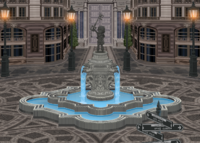
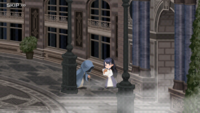
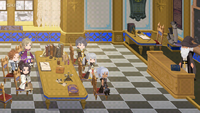
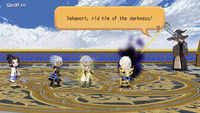
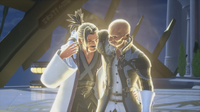
![Replica Xehanorts [KH III][KH III RM]](https://kh.wiki.gallery/images/thumb/e/ea/Replica_Xehanort_KHIII.png/76px-Replica_Xehanort_KHIII.png)
![Hermod [KH DR]](https://kh.wiki.gallery/images/thumb/c/ce/Hermod_KHDR.png/50px-Hermod_KHDR.png)
![Urd [KH DR]](https://kh.wiki.gallery/images/thumb/8/8a/Urd_KHDR.png/65px-Urd_KHDR.png)
![Vor [KH DR]](https://kh.wiki.gallery/images/thumb/9/96/Vor_KHDR.png/59px-Vor_KHDR.png)
![Odin [KH DR]](https://kh.wiki.gallery/images/thumb/9/9a/Odin_KHDR.png/66px-Odin_KHDR.png)
![Baldr [KH DR]](https://kh.wiki.gallery/images/thumb/9/9d/Baldr_KHDR.png/51px-Baldr_KHDR.png)
![Vala [KH DR]](https://kh.wiki.gallery/images/thumb/0/09/Vala_KHDR.png/63px-Vala_KHDR.png)
![Hoder [KH DR]](https://kh.wiki.gallery/images/thumb/6/6e/Hoder_KHDR.png/51px-Hoder_KHDR.png)
![Sigrun [KH DR]](https://kh.wiki.gallery/images/thumb/6/66/Sigrun_KHDR.png/63px-Sigrun_KHDR.png)
![Sigurd [KH Uχ]](https://kh.wiki.gallery/images/thumb/4/4b/Sigurd_KHUX.png/51px-Sigurd_KHUX.png)
![Unnamed cloaked figure [KH Uχ][KH DR]](https://kh.wiki.gallery/images/thumb/4/4a/Cloaked_figure_KHUX.png/107px-Cloaked_figure_KHUX.png)
![Unnamed woman [KH Uχ][KH DR]](https://kh.wiki.gallery/images/thumb/d/d3/Unnamed_Woman_KHUX.png/55px-Unnamed_Woman_KHUX.png)
![Shadow [KH III RM]](https://kh.wiki.gallery/images/thumb/e/ea/Shadow_KHIII.png/120px-Shadow_KHIII.png)
![Mega-Shadow [KH DR]](https://kh.wiki.gallery/images/thumb/f/f5/Mega-Shadow_KHX.png/120px-Mega-Shadow_KHX.png)
![Neoshadow [KH III RM]](https://kh.wiki.gallery/images/thumb/4/4d/Neoshadow_KHIII.png/108px-Neoshadow_KHIII.png)
![Helmed Body [KH III RM]](https://kh.wiki.gallery/images/thumb/9/99/Helmed_Body_KHIII.png/114px-Helmed_Body_KHIII.png)
![Large Snowman [KH DR]](https://kh.wiki.gallery/images/thumb/a/a4/Large_Snowman_KHX.png/114px-Large_Snowman_KHX.png)
![Ringmaster [KH DR]](https://kh.wiki.gallery/images/thumb/b/b3/Ringmaster_KHX.png/120px-Ringmaster_KHX.png)
![Satyr [KH III RM]](https://kh.wiki.gallery/images/thumb/1/1f/Satyr_KHIII.png/85px-Satyr_KHIII.png)
![Flame Core [KH III RM][KH DR]](https://kh.wiki.gallery/images/thumb/3/38/Flame_Core_KHIII.png/116px-Flame_Core_KHIII.png)
![Water Core [KH III RM]](https://kh.wiki.gallery/images/thumb/7/70/Water_Core_KHIII.png/120px-Water_Core_KHIII.png)
![Malachite Bolero [KH III RM]](https://kh.wiki.gallery/images/thumb/a/aa/Malachite_Bolero_KHIII.png/120px-Malachite_Bolero_KHIII.png)
![Marine Rumba [KH III RM]](https://kh.wiki.gallery/images/thumb/6/67/Marine_Rumba_KHIII.png/120px-Marine_Rumba_KHIII.png)
![Apricot Opera [KH DR]](https://kh.wiki.gallery/images/thumb/4/4e/Apricot_Opera_KHUX.png/103px-Apricot_Opera_KHUX.png)
![Wicked Watermelon [KH DR]](https://kh.wiki.gallery/images/thumb/2/26/Wicked_Watermelon_KHX.png/71px-Wicked_Watermelon_KHX.png)
![Jack O' Lantern [KH DR]](https://kh.wiki.gallery/images/thumb/6/69/Jack_O%27_Lantern_KHX.png/72px-Jack_O%27_Lantern_KHX.png)
![Popcat [KH III RM]](https://kh.wiki.gallery/images/thumb/4/4b/Popcat_KHIII.png/76px-Popcat_KHIII.png)
![Vitality Popcat [KH III RM]](https://kh.wiki.gallery/images/thumb/8/80/Vitality_Popcat_KHIII.png/82px-Vitality_Popcat_KHIII.png)
![Munny Popcat [KH III RM]](https://kh.wiki.gallery/images/thumb/2/20/Munny_Popcat_KHIII.png/107px-Munny_Popcat_KHIII.png)
![Magic Popcat [KH III RM]](https://kh.wiki.gallery/images/thumb/8/87/Magic_Popcat_KHIII.png/89px-Magic_Popcat_KHIII.png)
![Wizard [KH DR]](https://kh.wiki.gallery/images/thumb/e/e8/Wizard_KHX.png/105px-Wizard_KHX.png)
![High Wizard [KH DR]](https://kh.wiki.gallery/images/thumb/3/34/High_Wizard_KHX.png/90px-High_Wizard_KHX.png)
![Morning Star [KH DR]](https://kh.wiki.gallery/images/thumb/0/01/Morning_Star_KHX.png/120px-Morning_Star_KHX.png)
![Gummi Hammer [KH DR]](https://kh.wiki.gallery/images/thumb/5/52/Gummi_Hammer_KHX.png/120px-Gummi_Hammer_KHX.png)
![Invisible [KH DR]](https://kh.wiki.gallery/images/thumb/3/32/Invisible_KHX.png/87px-Invisible_KHX.png)
![Ogre [KH DR]](https://kh.wiki.gallery/images/thumb/b/ba/Ogre_KHUX.png/87px-Ogre_KHUX.png)
![Fluttering [KH DR]](https://kh.wiki.gallery/images/thumb/d/d6/Fluttering_KHUX.png/112px-Fluttering_KHUX.png)
![Ifrit [KH DR]](https://kh.wiki.gallery/images/thumb/c/c9/Ifrit_KHUX.png/87px-Ifrit_KHUX.png)
![Wight Knight [KH DR]](https://kh.wiki.gallery/images/thumb/5/56/Wight_Knight_KHUX.png/120px-Wight_Knight_KHUX.png)
![Darkball [KH DR]](https://kh.wiki.gallery/images/thumb/d/de/Darkball_KHX.png/120px-Darkball_KHX.png)
![Polliwog [KH DR]](https://kh.wiki.gallery/images/thumb/8/8d/Polliwog_KHUX.png/120px-Polliwog_KHUX.png)
![Eliminator [KH DR]](https://kh.wiki.gallery/images/thumb/0/0a/Eliminator_KHX.png/120px-Eliminator_KHX.png)
![Pumpkin Soldier [KH DR]](https://kh.wiki.gallery/images/thumb/d/d0/Pumpkin_Soldier_KHX.png/77px-Pumpkin_Soldier_KHX.png)
![Terrible Tomte [KH DR]](https://kh.wiki.gallery/images/thumb/9/96/Terrible_Tomte_KHX.png/120px-Terrible_Tomte_KHX.png)
![Strange Tree [KH DR]](https://kh.wiki.gallery/images/thumb/a/ac/Strange_Tree_KHX.png/56px-Strange_Tree_KHX.png)
![Nosy Mole [KH DR]](https://kh.wiki.gallery/images/thumb/c/ce/Nosy_Mole_KHX.png/93px-Nosy_Mole_KHX.png)
![Driller Mole [KH DR]](https://kh.wiki.gallery/images/thumb/4/4c/Driller_Mole_KHUX.png/120px-Driller_Mole_KHUX.png)
![Hook Bat [KH DR]](https://kh.wiki.gallery/images/thumb/c/ca/Hook_Bat_KHX.png/120px-Hook_Bat_KHX.png)
![Search Ghost [KH DR]](https://kh.wiki.gallery/images/thumb/5/5d/Search_Ghost_KHX.png/79px-Search_Ghost_KHX.png)
![Bag O' Jewels [KH DR]](https://kh.wiki.gallery/images/thumb/7/7f/Bag_O%27_Jewels_KHX.png/120px-Bag_O%27_Jewels_KHX.png)
![Bad Dog [KH DR]](https://kh.wiki.gallery/images/thumb/6/66/Bad_Dog_KHX.png/111px-Bad_Dog_KHX.png)
![Darkside [KH III RM]](https://kh.wiki.gallery/images/thumb/b/bc/Darkside_KH.png/112px-Darkside_KH.png)
![Ferry Reaper [KH DR]](https://kh.wiki.gallery/images/thumb/5/58/Ferry_Reaper_KHUX.png/120px-Ferry_Reaper_KHUX.png)
![Furious Reaper [KH DR]](https://kh.wiki.gallery/images/thumb/9/9f/Furious_Reaper_KHDR.png/120px-Furious_Reaper_KHDR.png)
![Demon Tide [KH DR]](https://kh.wiki.gallery/images/thumb/6/6c/Demon_Tide_KHUX.png/120px-Demon_Tide_KHUX.png)
![Earth Gargoyle [KH DR]](https://kh.wiki.gallery/images/thumb/4/45/Earth_Gargoyle_KHDR.png/120px-Earth_Gargoyle_KHDR.png)
![Dusk [KH III RM]](https://kh.wiki.gallery/images/thumb/7/7c/Dusk_KHIII.png/77px-Dusk_KHIII.png)
![Reaper [KH III RM]](https://kh.wiki.gallery/images/thumb/1/19/Reaper_KHIII.png/120px-Reaper_KHIII.png)
![Sorcerer [KH III RM]](https://kh.wiki.gallery/images/thumb/a/ac/Sorcerer_KHIII.png/70px-Sorcerer_KHIII.png)
![Ninja [KH III RM]](https://kh.wiki.gallery/images/thumb/b/bc/Ninja_KHIII.png/120px-Ninja_KHIII.png)
![Sniper [KH III RM]](https://kh.wiki.gallery/images/thumb/a/a6/Sniper_KHIII.png/77px-Sniper_KHIII.png)
![Gambler [KH III RM]](https://kh.wiki.gallery/images/thumb/a/a2/Gambler_KHIII.png/94px-Gambler_KHIII.png)
![Berserker [KH III RM]](https://kh.wiki.gallery/images/thumb/5/5c/Berserker_KHIII.png/120px-Berserker_KHIII.png)
![Master Xehanort [KH III]](https://kh.wiki.gallery/images/thumb/1/19/Master_Xehanort_KHIII.png/117px-Master_Xehanort_KHIII.png)
![Spirit of the Magic Mirror [KH DR]](https://kh.wiki.gallery/images/thumb/3/38/Spirit_of_the_Magic_Mirror_KHX.png/111px-Spirit_of_the_Magic_Mirror_KHX.png)
![Cerberus [KH DR]](https://kh.wiki.gallery/images/thumb/4/4b/Cerberus_KHX.png/120px-Cerberus_KHX.png)
![Hades [KH DR]](https://kh.wiki.gallery/images/thumb/0/03/Hades_KHX.png/67px-Hades_KHX.png)
![Vali, Vala, & Vidar [KH DR]](https://kh.wiki.gallery/images/thumb/d/d5/Vali%2C_Vala%2C_%26_Vidar_KHDR.png/120px-Vali%2C_Vala%2C_%26_Vidar_KHDR.png)
![Hringhorn [KH DR]](https://kh.wiki.gallery/images/thumb/a/ac/Hringhorn_KHDR.png/73px-Hringhorn_KHDR.png)